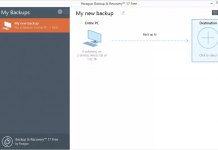
As an employer or manager, you know challenges of managing timesheets all too well the. It often feels like you’re buried under heaps of paper logs and drowning in spreadsheet chaos. But what if there was a better way? Imagine having all your employee time tracking seamlessly streamlined in one convenient online system. With an online timesheet app, your team can conveniently log their hours from any device, providing you with real-time insights into who’s working on what and when.
However, before making the switch to digital timesheets, it’s essential to know what features you truly need. This article will run through the top 5 features to consider in an online timesheet solution to make tracking time a total breeze.
1. Mobile App Functionality
Nobody wants to be tethered to a computer these days to track their hours. When choosing online timesheet software, a well-designed mobile app is one of the most valuable features. After all, modern employees are always on the go!
A good app lets your team quickly and easily log their time from anywhere. Instead of worrying about finding their laptops or filling out messy forms, staff can open the timesheet app during breaks. Transitioning between tasks should be seamless.
Look for an intuitive mobile experience that mirrors the full website. Details like simple time entry and not having to reload pages make the process painless. The app should work across both Android and iPhones too.
Employees stay productive regardless of their location. And you maintain full oversight of the timesheet from your phone as well. It’s a win-win that saves everyone time and stress.
2. User-Friendly Interface
No one wants to learn rocket science just to do their timesheets, right? That is why an online timesheet software should have an intuitive interface above all else. Your team should be able to log hours quickly without major learning curves getting in the way of productivity.
A user-friendly dashboard sets users up for success. Login pages and navigation menus should be self-explanatory, with clear, plain language throughout. Focus on an interface built with simplicity at the top of mind, not overwhelming users with unnecessary clicks or fields. Things like:
- clean layouts that don’t cramp important details,
- obvious buttons and hyperlinks,
- instructions are presented helpfully, not hidden in small text,
- sensible default settings reduce manual inputs,
- findable notifications and reminders for upcoming tasks,
indicate a well written software that is easy to use. The last thing you need is employees struggling just to get their times logged! Avoid interfaces cluttered with confusing jargon or non-intuitive placement of features. At the end of the day, your staff needs fast, frustration-free time tracking – not UX nightmares.
3. Time Tracking Flexibility
One size does not fit all when it comes to time tracking. The best online timesheet software understands this and provides options to suit various workstyles.
Your team may use different methods like manual hour logging, schedule-based tracking, or geo-fence in/out punching. Make sure the solution supports multiple entry styles without hassle.
Flexibility also applies to tasks like tracking overtime versus regular hours or dividing work between multiple jobs and clients. The interface should allow custom fields and easy ways to attribute time spent.
Additionally, think about your organization’s specific needs over time. Maybe you mainly schedule hourly staff now but foresee salaried exempts joining later. Choose cloud software that steadily adds features to align with evolving requirements.
4. Approval Workflow
One important part of managing timesheets is approving hours logged by employees. Look for online timesheet software that facilitates simple yet robust approval workflows.
Approvals allow managers to review time submissions and ensure accuracy before payroll. They may also make adjustments as needed by the department or project.
Key things to look for in an approval process include:
- Intuitive interface for approving or sending timesheets back with notes
- Notifications alert managers of timesheets pending review
- Easy reassignment of approvals, such as delegating during absences
- Detailed audit trail of changes and sign-offs
- Reminders to keep the process moving efficiently
Many online scheduling software support approving entire timesheets or individual deviations. Such flexible settings maintain compliance according to your business needs. They help flag issues promptly for correction. In turn, this results in payroll accuracy to benefit both employees and budgeting processes.
5. Resource Scheduling
Coordinating employee schedules, time off, and shift substitutions is no small feat. The best online timesheets make workforce planning a breeze.
Look for robust yet user-friendly features like:
- Simple calendar views for creating rotas across locations
- Drag-and-drop schedule building for any shift lengths
- Automatic assignment of schedules to timesheets
- Real-time availability of colleagues for shift swaps
- Paid time off requests submitted for approval
- Scheduling insights based on historical patterns
Look for solutions with advanced tools that can model future coverage and save guesswork. As a manager, it empowers you to easily build sustainable schedules, factoring holidays, vacations, and training days.
Online timesheets should also have resource scheduling features that empower employees. Confirming a swap or having their requested days off approved right in the app creates transparency. Staff satisfaction increases as a result.
Conclusion
Choosing the right online timesheet solution can truly lift a weight off your shoulders. With the features covered here, you now have the blueprint to find software that streamlines hours, scheduling, and payroll into a well-oiled machine. Remember – ease of use, flexibility, and visibility should top your priority list. When you gain control of timesheets digitally, your business gains a new spring in its step too!










